Going to the City of York
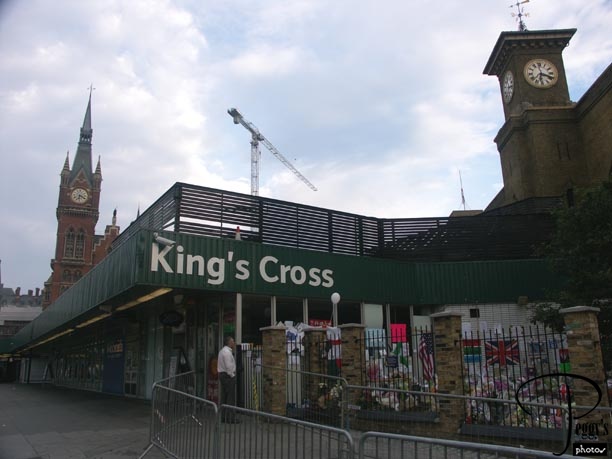
My children knew that today I was going to take the train to York, but I didn’t tell them from what station the train left––Kings Cross Station, which was the sight of the first explosion on 7/7. I knew it would be okay to leave from there but I wasn’t sure that they would believe this. Both main line trains and the Underground leave from this station; I was taking a main line train that left at 7 a.m., but I had to meet the Grayline representative there at 6:30 a.m. to get my train ticket and my vouchers. I took a taxi to the station because I didn’t know how long the bus ride would be and I didn’t want to be late (or get on a bus at 5:30 a.m.)––so I spent another 20 pounds on taxi fare. You can see the memorial to the victims of the terrorist attack at Kings Cross Station in this photo. It was very sad to see it.

Going to the City of York
Going to the City of York
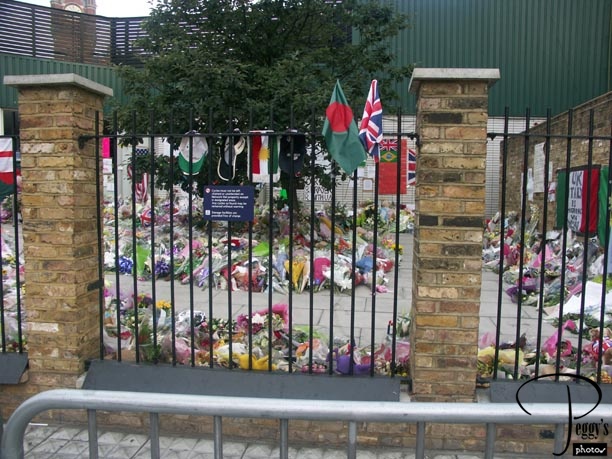
Another view of the memorial.

Going to the City of York
York
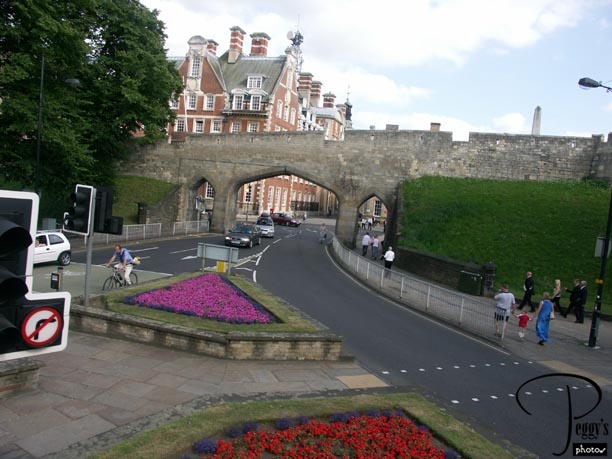
Our train was to arrive in York at about 9 a.m., but due to electrical problems on the train line, we didn’t arrive until 10 a.m. There was one other person going on the excursion to York with me––a man who came wearing a Los Angeles Dodgers T–shirt. He thought that since I was from LA that he would be traveling with another Dodger Fan (he used to live in the LA area but moved to Arizona) and he was terribly disappointed when I told him that I had only been to two Dodger games ever and that was only because my son had tickets for the very best seats in the stadium and that I also told him that I do not follow the Dodgers. I mention this as he now knew we had little in common and didn’t want to hang around with me very much. I can really put people off! Our group did though include three people from Memphis, Tennessee, who were going on a day excursion to Edinburgh, a stop on the train’s northern journey. When I told one of the men in the group that I was from California, he started razing me about us having Arnie as our governor (I hadn’t even voted for him)––and this wasn’t the first person on my trip to make fun of our choice of governor, quite a number of people did. Anyway, the York Tourist Office was right at the station and the Dodger fan and I saw a notice about a walking tour of York that was to start in 15 minutes. We got directions to its meeting place (through one of the city walls) and we started hiking up the hill to it. This is the city wall we were directed to.

York
York
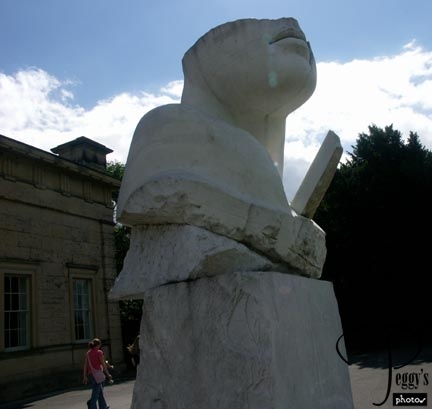
We made it up to the meeting place at the Yorkshire Museum, after I was told that I walked too slow (the Dodger fan said that is because I live in LA and we don’t walk––we only drive). I was supposed to keep up with someone over 6 feet tall? We had an older woman as our tour guide––these tours are free and the tour guides conduct the tours out of a love of their city. We passed this statue of Emperor Constantine. York was founded in 71 A.D. as a Roman provincial capital and was the northernmost city in Roman Empire. Constantine was proclaimed Roman Emperor in 306 A.D. here.

York
York
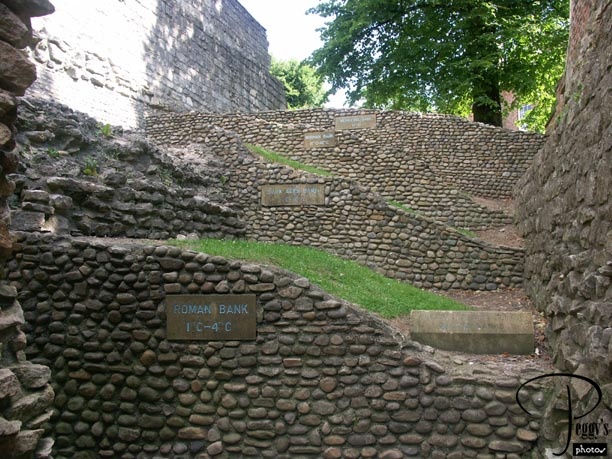
Near the museum we saw this collection of old city walls. The first wall (closest to the front of the photo) is the Roman Bank (1st–4th centuries). The second wall is the Dark Ages Bank (5th–10th centuries). The third is the Norman Bank (11th–12th centuries), and the fourth, the Medieval Bank (13th century).

York
York
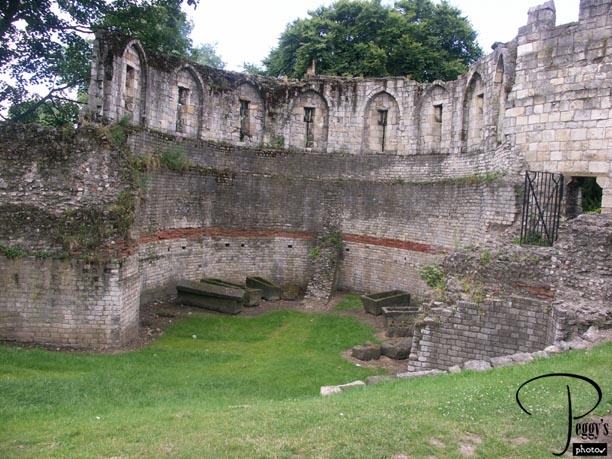
A part of the old walls––I believe this a Norman wall built on top of a Roman wall.

York
York
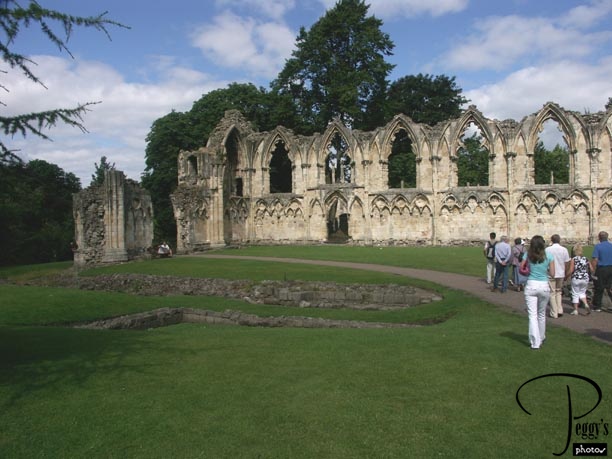
Also nearby were the ruins of St. Mary’s Abbey, destroyed during the takeover of the Catholic Churches by King Henry VIII.

York
York
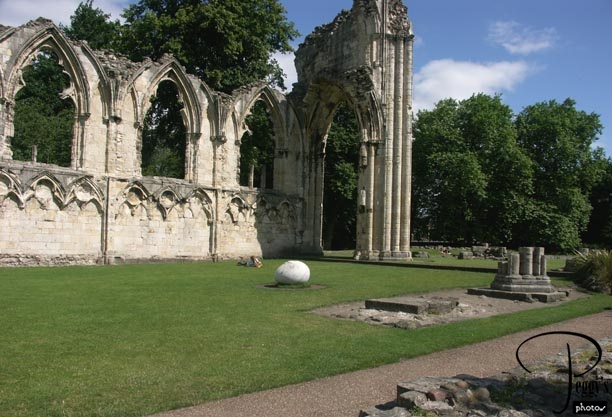
Our guide told us that this was a dinosaur egg in front of the abbey.

York
York
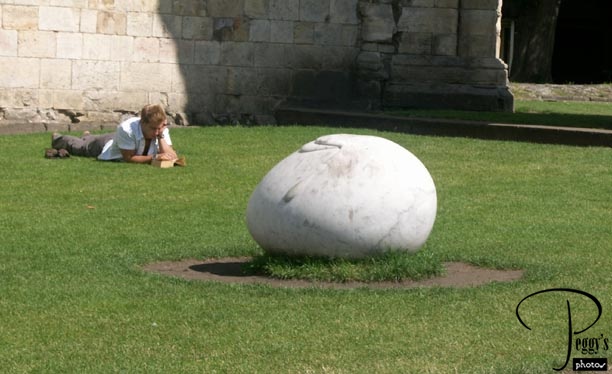
Close–up of the dinosaur egg.

York
York

The Anglo Saxons came into York after the Romans left and York became the capital of Northumbria. Then came the Vikings, then the Danes, and then the Normans who destroyed the city and then rebuilt it. Most of York remains today as a Norman–built medieval city. This building is called Kings Manor and was part of an old college but which now is a school.

York
York
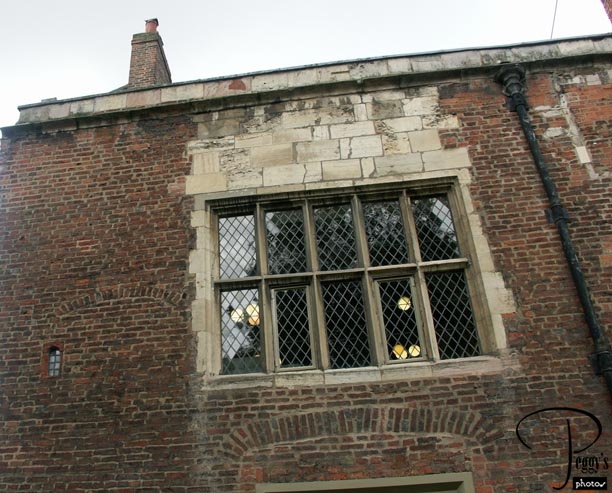
Note the size of the window on the left of the building.

York
York
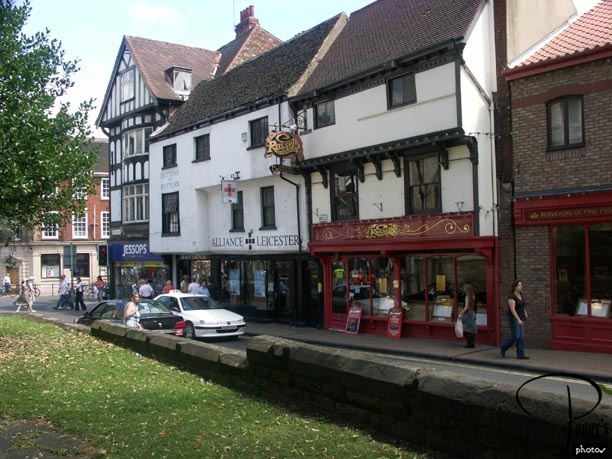
We next took a walk on the city walls, going up the steps that you can see in the photo. The gates in the walls are called bars; this one is Bootham Bar. You can also see the towers of York Minster. The cathedral here is called a minster––a place from which people go out to minister.

York
York
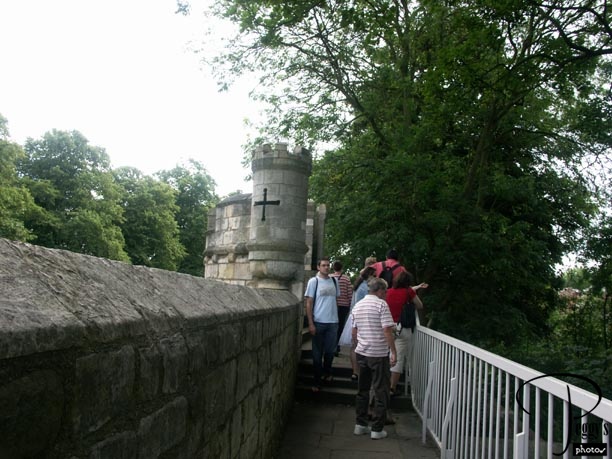
We on now on walking on the top of the wall. There are 2 1/2 miles of walls around the city though there are some breaks in them. Some parts of the walls do not have any railings to keep you from falling.

York
York
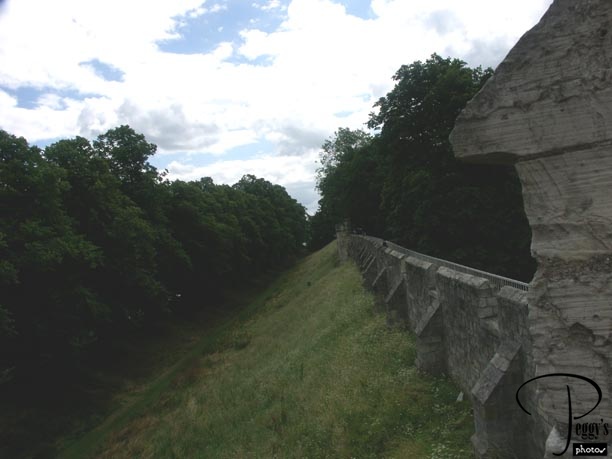
View of the wall from its outside.

York
York
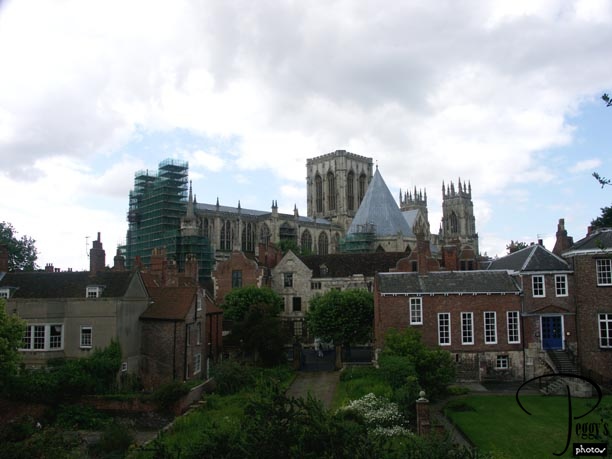
View of York Minster from the wall. Our guide told us that there is always scaffolding somewhere on its outside as it is a continuing process to keep up the minster.

York
York
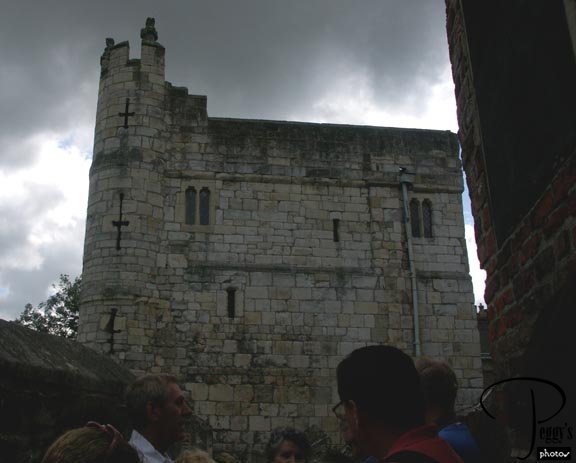
View of Monk Bar from its side.

York
York
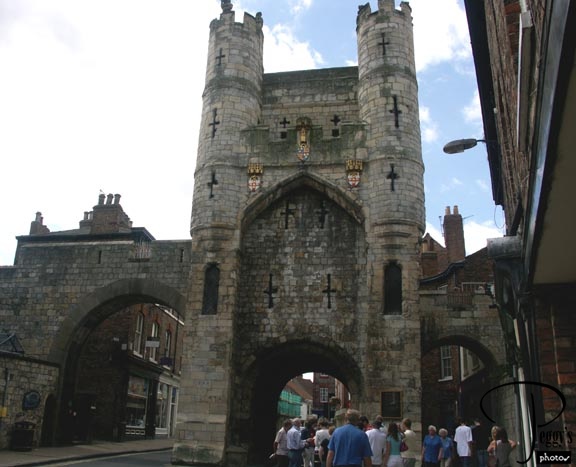
View of Monk Bar from street level. It is the most ornate of the surviving bars.

York
York
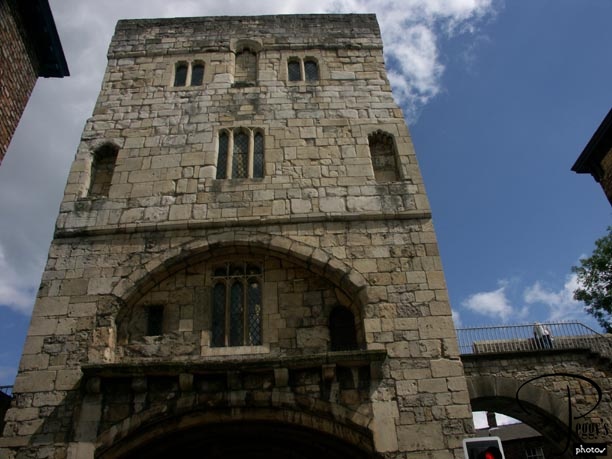
View of Monk Bar from inside the city walls.

York
York
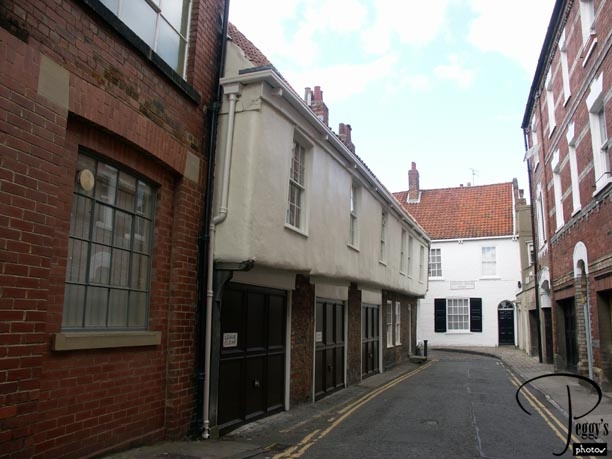
We next took a walk around York. Our guide pointed out this building to us and its second–story overhang (you see this all over York). In the Middle Ages, taxes on houses were levied only on the square footage of the first story, so if people wanted larger houses, they increased their size on the second floor.

York
York
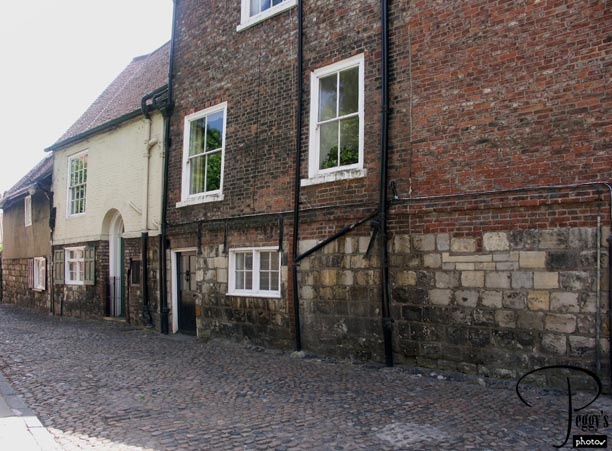
Bulging building on a cobblestone street being held together by metal rods.

York
York

Half–timbered building with second–story overhang.

York
York
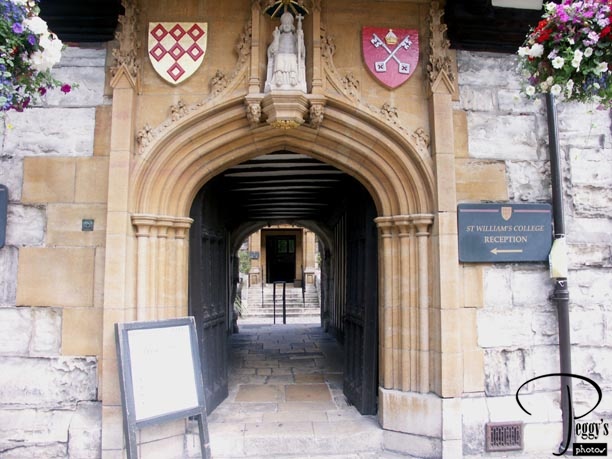
Entrance to St. Williams College.

York
York
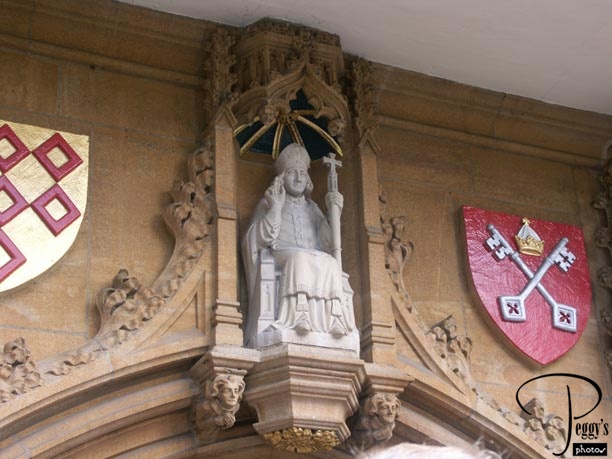
Statue on top of the entrance.

York
York
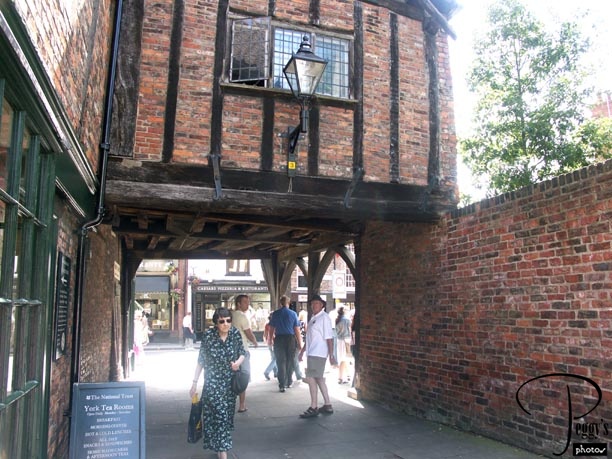
Interesting overhang of building onto the wall.

York
York
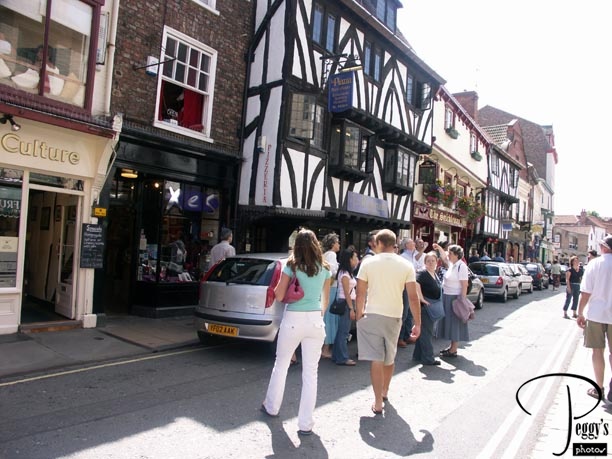
A street in York.

York
York
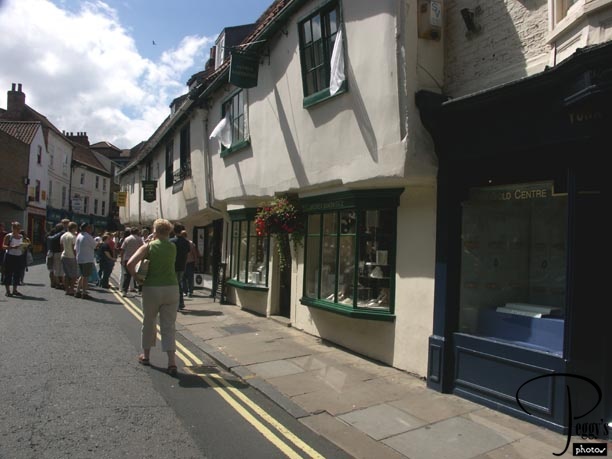
Another York street.

York
York
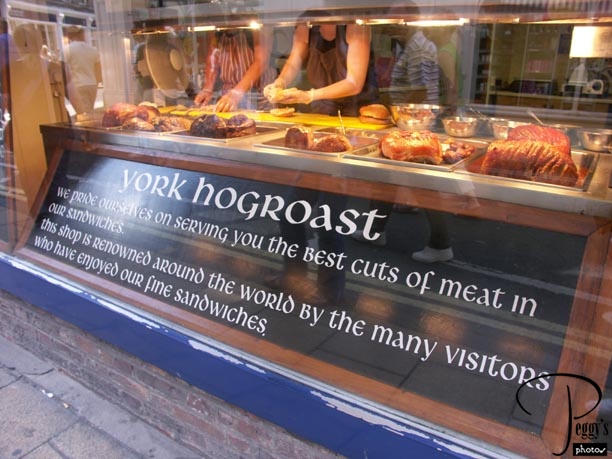
York Hogroast Store offering sandwiches made from the finest meats.

York
York
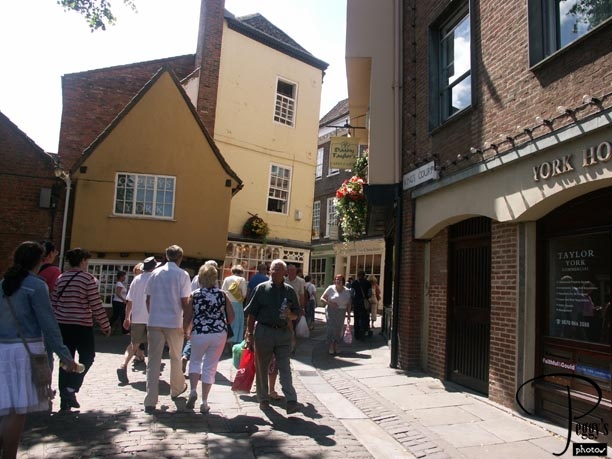
Entering the Shambles. This is the ancient street of the butchers of York. “Shambles” comes from the word “Shamel” which refers to the stalls or benches on which the butchers displayed their meat. The Shambles was rebuilt in 1400.

York
York
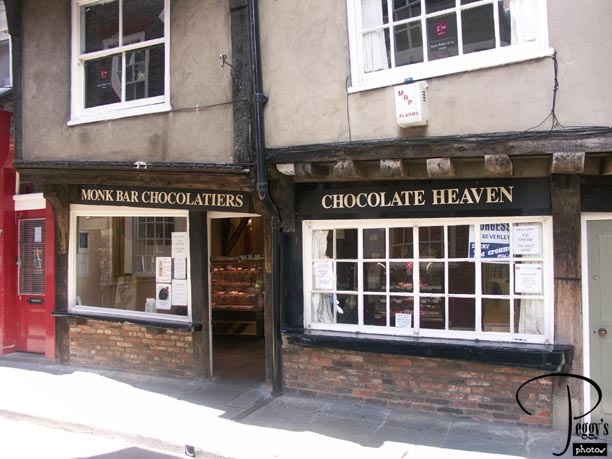
You can see two of these “shamels” outside this chocolate shop.

York
York
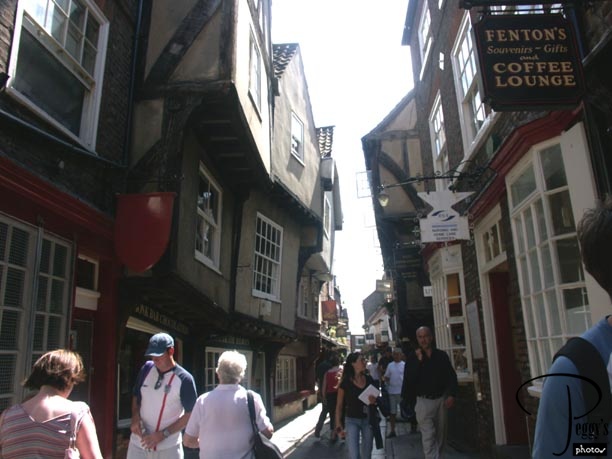
Many of the buildings in the Shambles are so close together and overhang so much that they are almost touching.

York
York
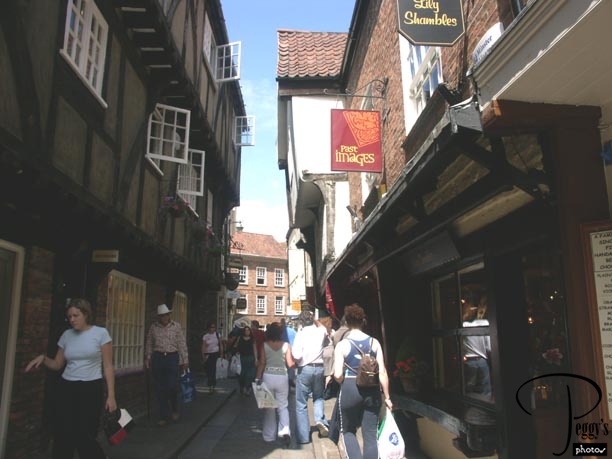
Another view of the Shambles.

York
York
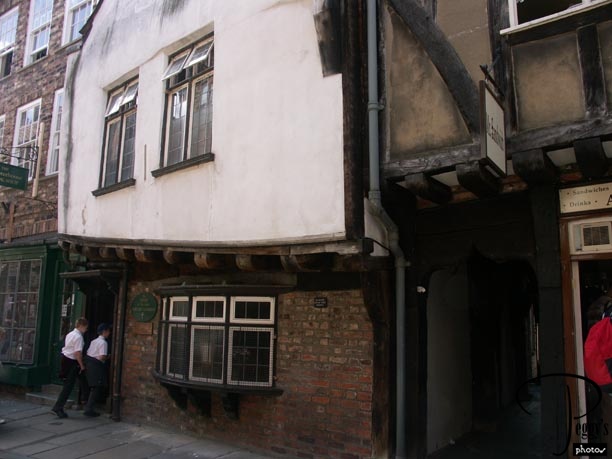
Located in the Shambles is the shrine to St. Margaret (located on the bottom floor of the middle house). Margaret Clitherow was the wife of one of the Shambles’ butchers. During the time when Protestant England was at the verge of war with Catholic Europe, she, a Catholic, harbored priests in her home. She was caught and put to death for doing this.

York
York
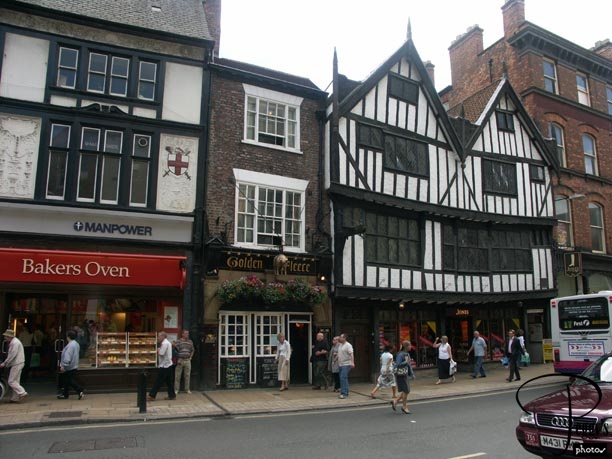
The Golden Fleece, second building from the left. It advertises itself as “York’s Most Haunted Inn.” It was established in 1503.

York
York
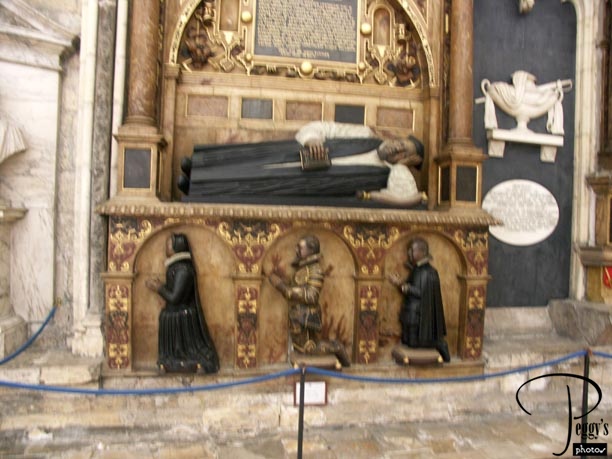
Our nearly two–hour walking tour ended here. Dodger fan and I went our separate ways to do our own sightseeing. I walked around the city. This is a photo of the River Ouse and the Merchant Adventures Hall, founded 1357.

York
York

Another view of the hall. It advertises itself as Europe’s Finest Medieval Guild Hall.

York
York
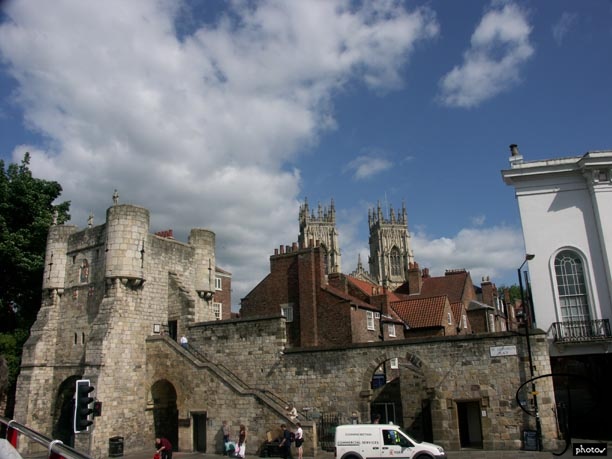
Other buildings that I passed along my walk.

York
York
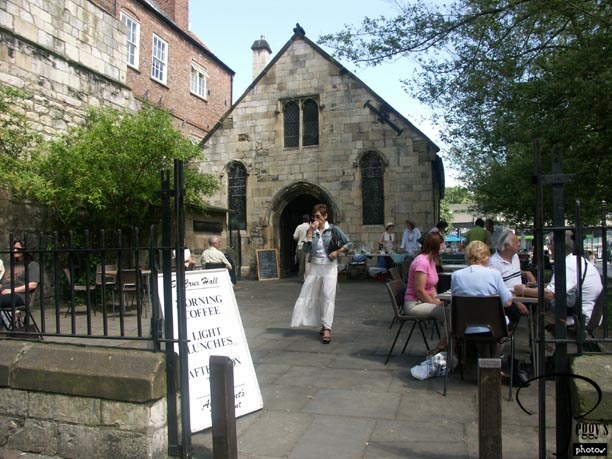
An old church offering a light lunch. It was time for lunch but I bought a sandwich, crisps (potato chips), and Diet Coke nearby and ate sitting on the wall in front of the church. It had become another very hot day. The English heat wave extended all the way up to York.

York
York

I next walked up the hill to visit York Minster. This is a street leading up to the minster.

York
York
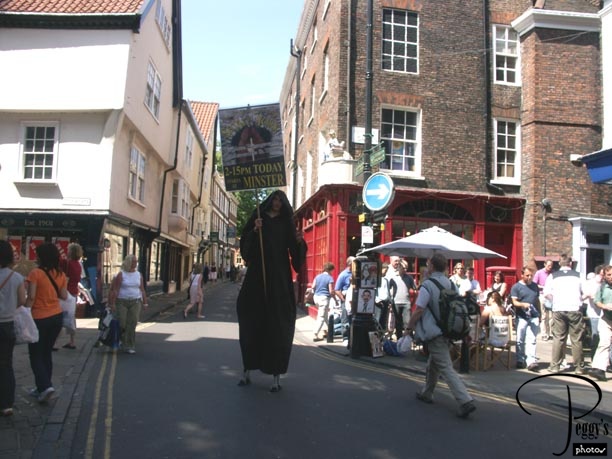
I passed this ghoul at an intersection. His sign read: “Secret York. Explore Passageways, Undercrofts, and Ruins. 2:15 Today.” Sounds interesting. I think that I would have gone on it if I had more time in York. Many people spend at least two days here.

York
York Minster
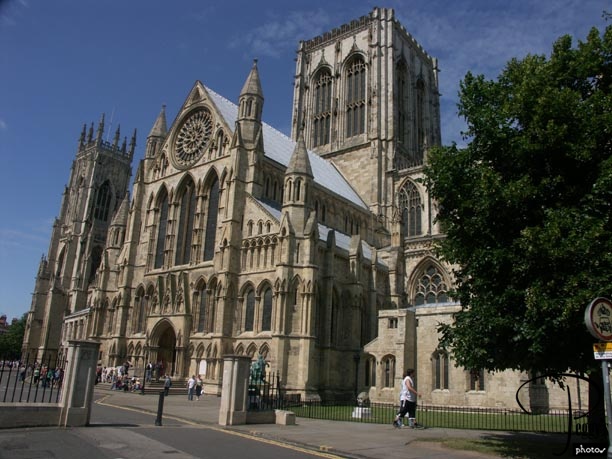
York Minster. It was begun in 1220 and took 250 years to finish. It was originally a Catholic church but it denomination was changed to Church of England during Henry VIII’s reign.

York Minster
York Minster
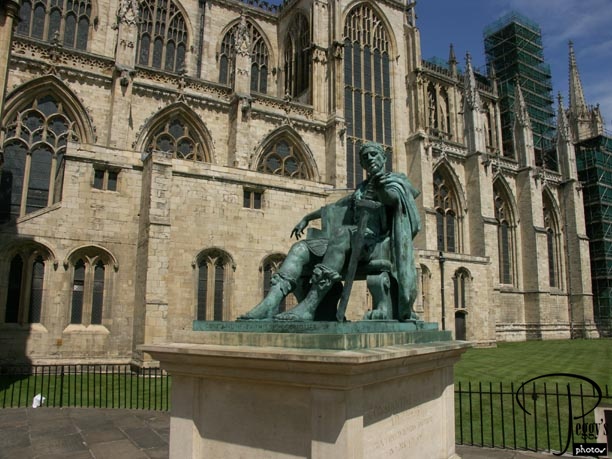
Statue of Constantine in front of York Minster.

York Minster
York Minster
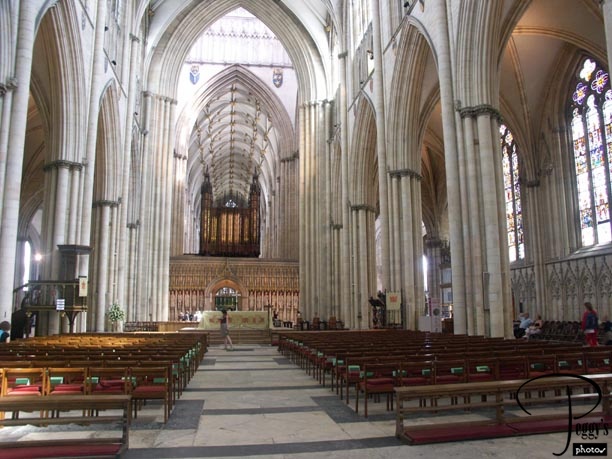
Inside York Minster. View of the altar.

York Minster
York Minster
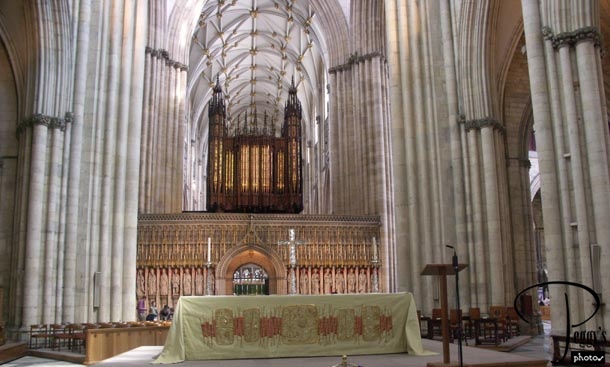
Close–up of the altar.

York Minster
York Minster
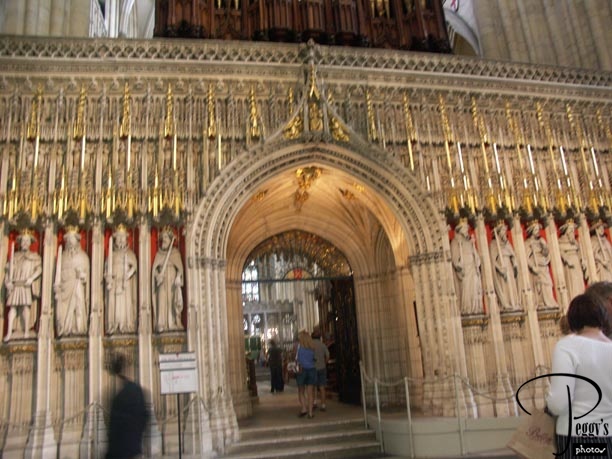
The stone Choir Screen. This dates back to the 15th century and the statues are of the kings of England from William I to Henry VI.

York Minster
York Minster
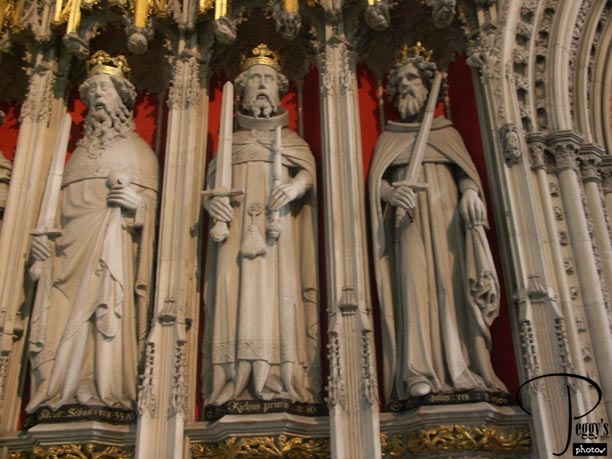
Close up of the statues.

York Minster
York Minster
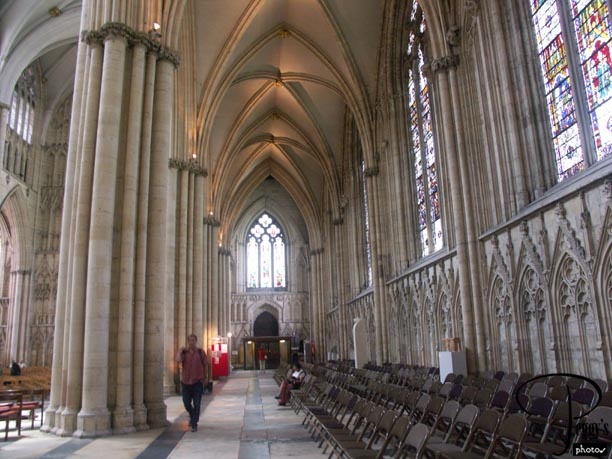
Looking backward from the Choir Screen.

York Minster
York Minster
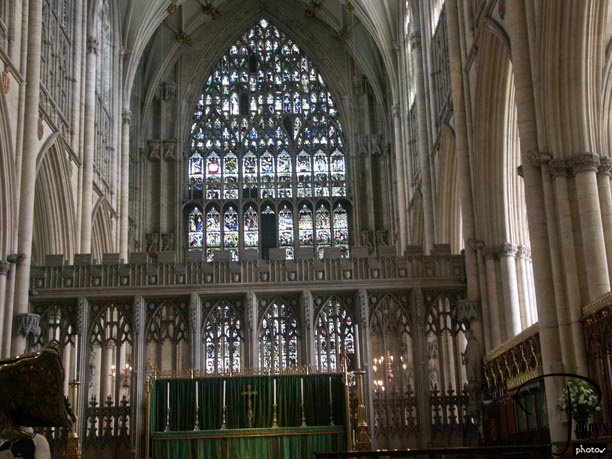
Stained glass window (the Great East Window). York Minster has the largest collection of medieval stained glass in Britain.

York Minster
York Minster
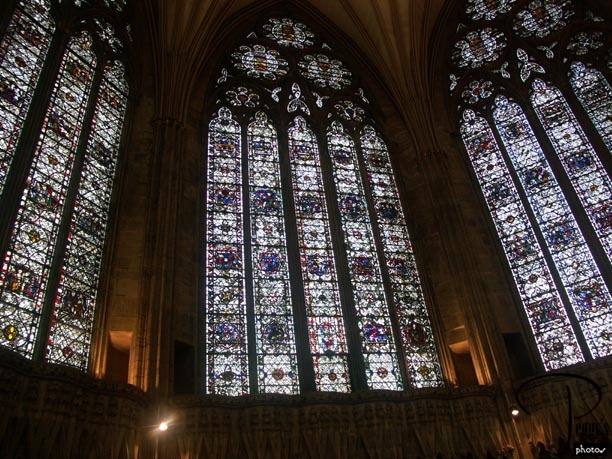
More stained glass windows.

York Minster
York Minster
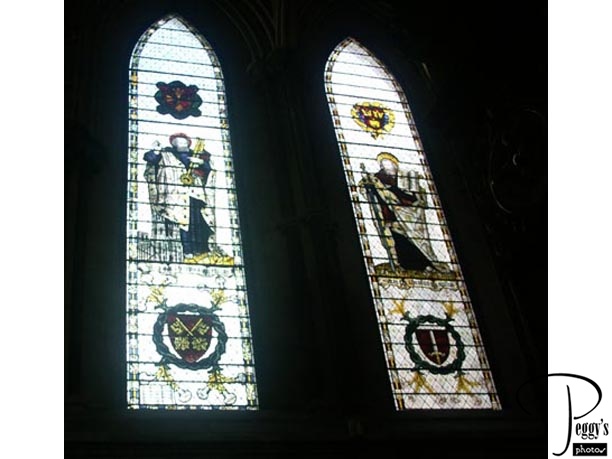
More stained glass windows.

York Minster
York Minster
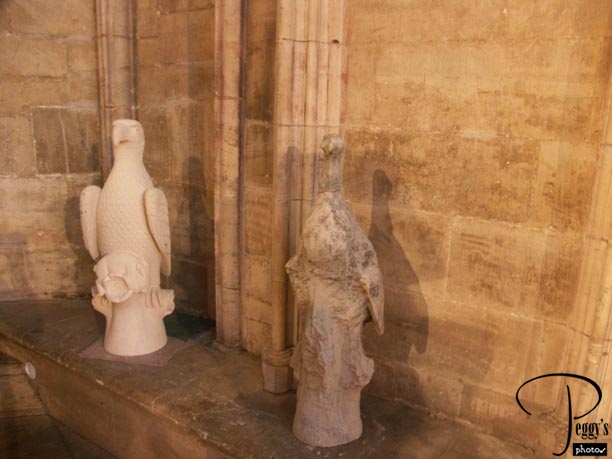
Exhibit of a worn stone eagle that was on the outside of the minster and its newly made replacement.

York Minster
York Minster
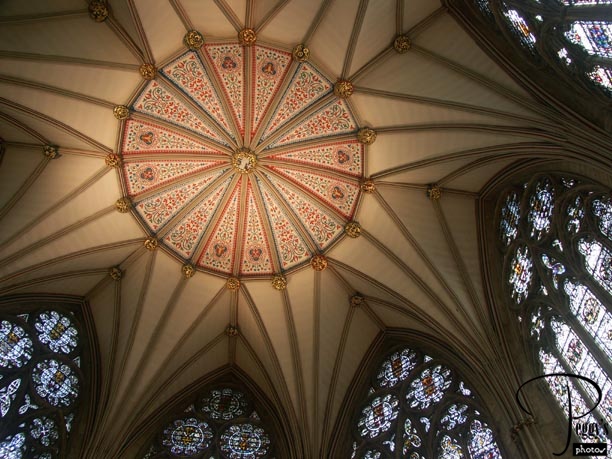
Ceiling of the Chapter House.

York Minster
York Minster

Stained glass windows in the Chapter House.

York Minster
York Minster
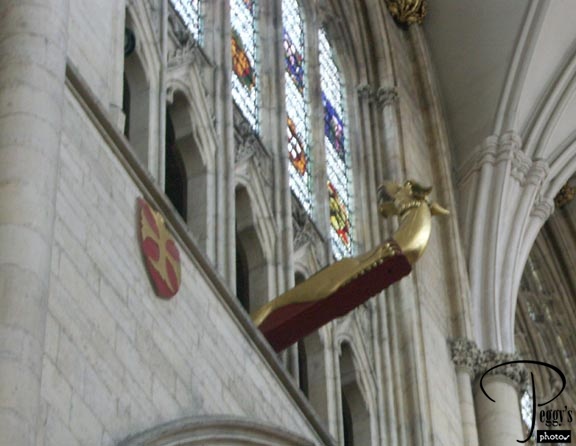
Dragon on the right of the nave of the minster. It’s purpose is not known but it is believed that it was used to raise the lid of a baptismal font.

York Minster
York Minster
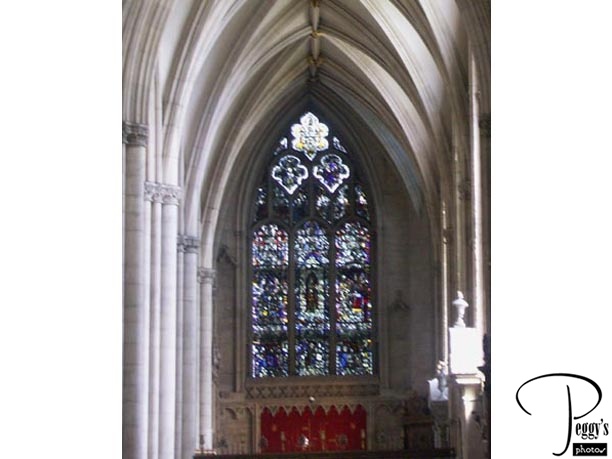
More stained glass.

York Minster
York Minster
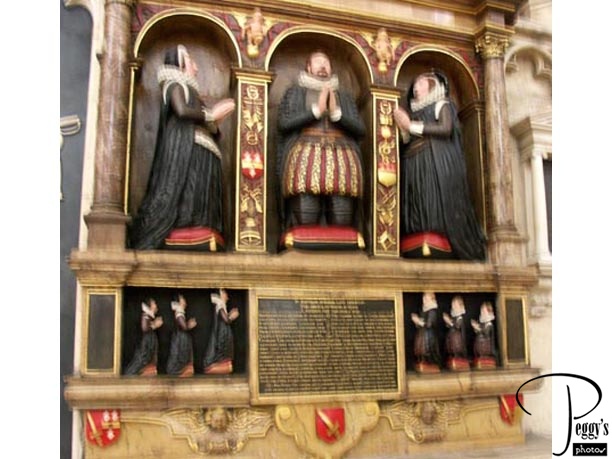
One of the tombs in the minster.

York Minster
York Minster
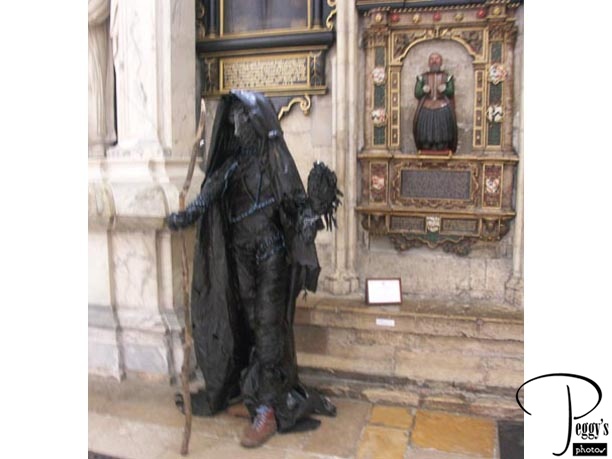
I don’t know what this statue in the minster is.

York Minster
York Minster

Another tomb inside the minster.

York Minster
York
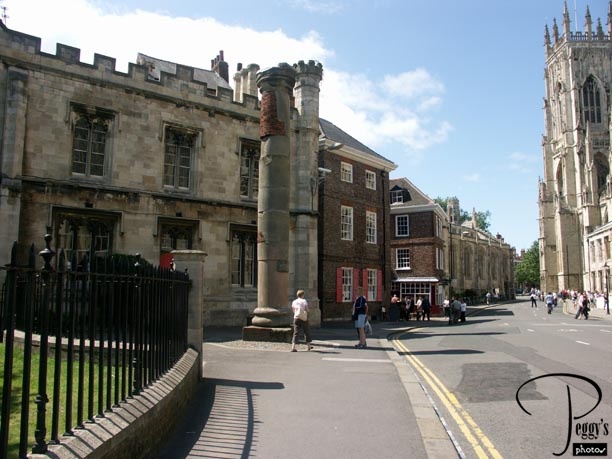
Roman column near York Minster.

York
York

A church near York Minster.

York
York
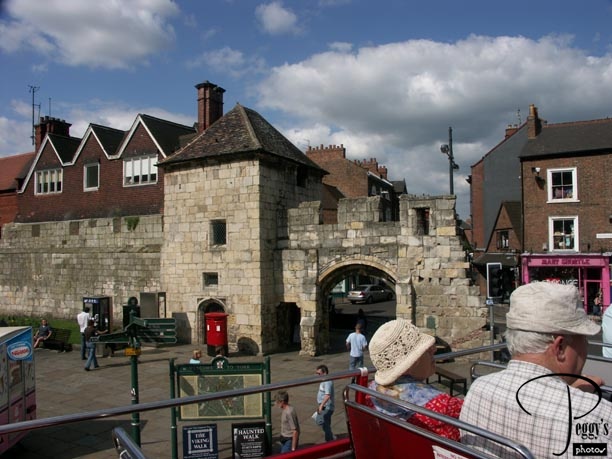
From here, I hopped on the hop–on hop–off bus to take a tour around the city. We passed another bar.

York
York
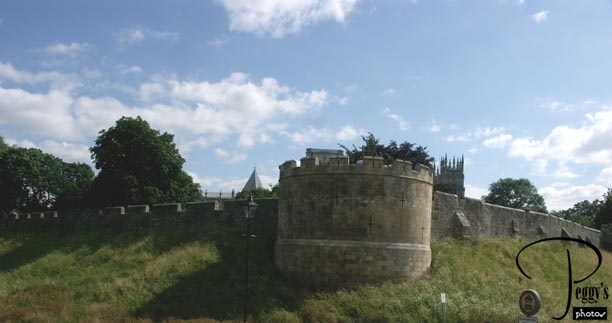
More of the city wall.

York
York
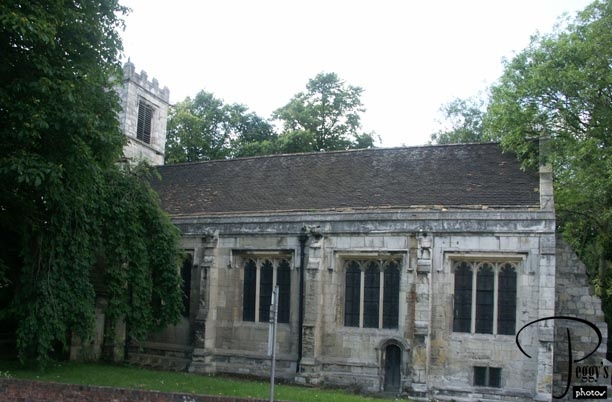
Church with a devil’s door (the little black door on the side of the church). This door would be left open during various services so that the devil could escape the church.

York
York
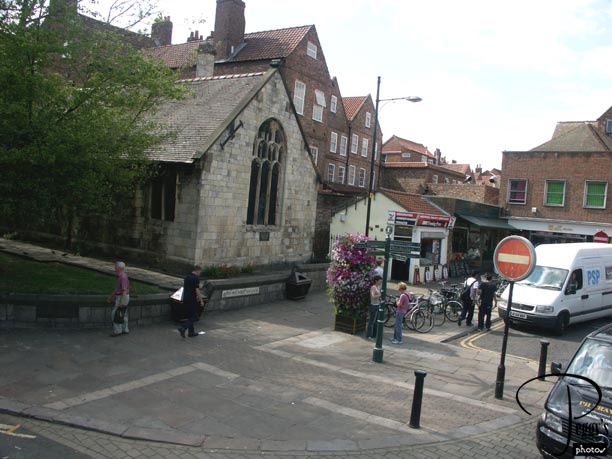
Whip Ma Whop Ma Gate––the shortest street in York (a gate is a street and a street in a bar here in York).

York
York
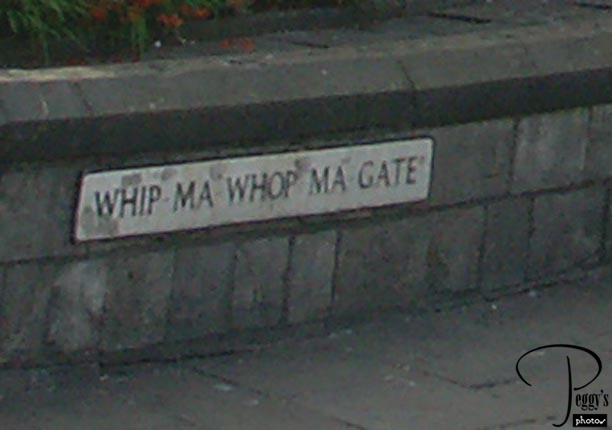
The gate sign.

York
York
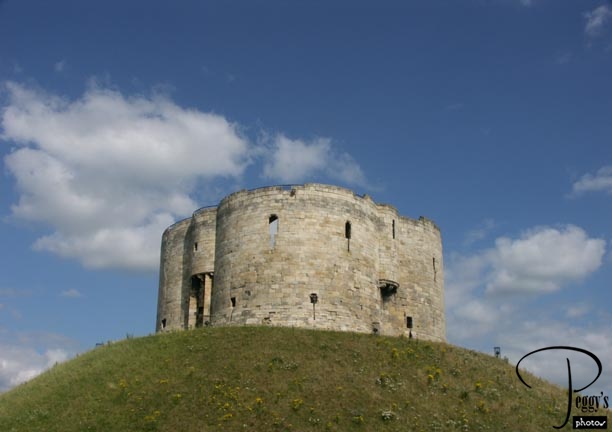
Clifford’s Tower. The site that the tower in on was used by the Romans as a cemetery. The tower is the last remaining part of York Castle built in the 13th century. In 1322, Edward II had the rebel Lord Robert Clifford hung in chains from this tower––hence, the name Clifford’s Tower.

York
York
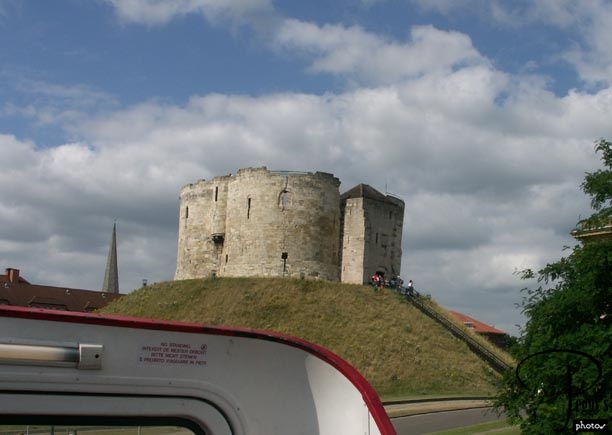
Another view of Clifford’s Tower.

York
York
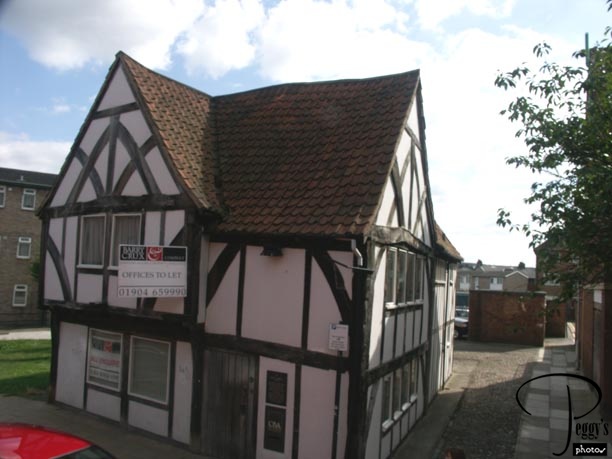
The oldest half–timbered house in York.

York
York
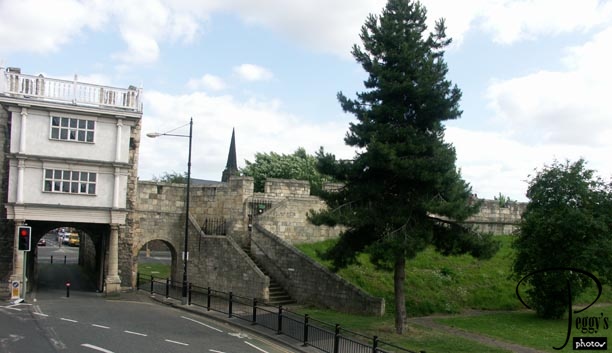
Another bar.

York
York
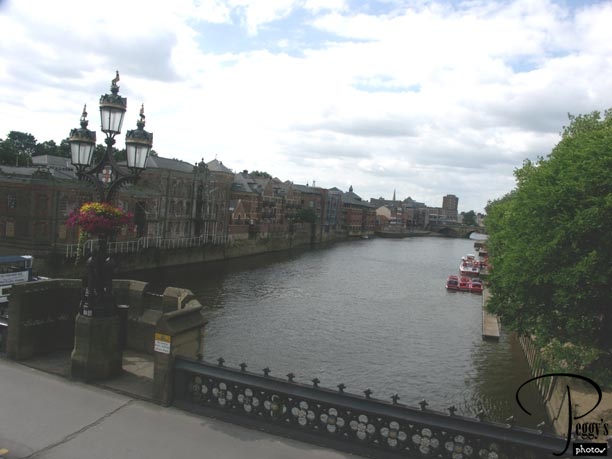
A view of the River Ouse.

York
York
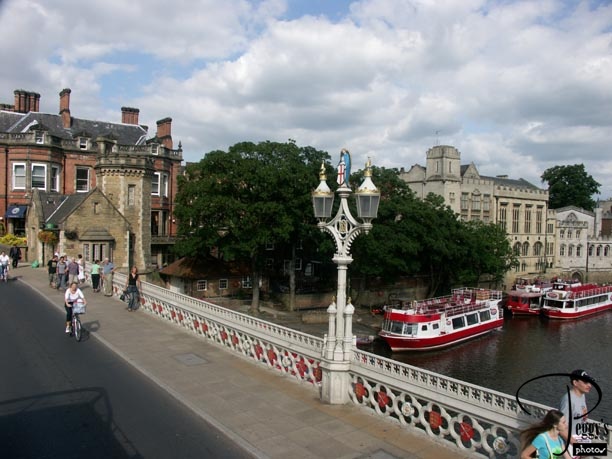
Another view of the River Ouse.

York
York
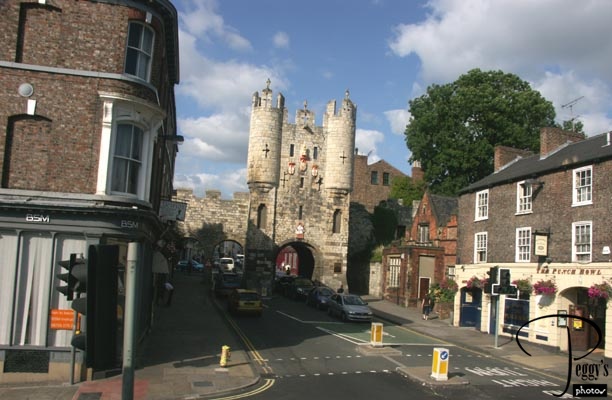
Micklegate Bar. I hopped off the hop–on hop–off bus close to the train station and ate dinner (hamburger, crisps, and Diet Coke) a pub which was part of the station. I thought that its location meant that it would be more of a restaurant than a pub, but I was wrong. I felt somewhat uncomfortable eating there but the food was good. Our train back to London left at 7:10 p.m. and arrived back past 9 p.m. I didn’t want to spend another 20 pounds for a taxi, so I took a bus back to my hotel, just as any real Londoner would do. However, after 7/21, the day of the attempted bombings, I read that people were no longer taking the bus from Kings Cross Station and the wait for a taxi was over 1 hour. I imagine that things have changed back to normal by now.
